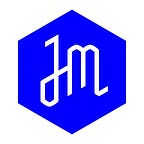The Diversity of the Jewish and LGBTQ Experience
For the month of June, the Jewish Museum invited writer and activist Adam Eli to explore works of art in the Jewish Museum collection that celebrate Lesbian, Gay, Bisexual, and Transgender Pride Month through four themes: persecution, empathy, activism, and the diversity of identity. The series kicks off with highlights of works by LGBTQ artists that celebrate all types of identities and expressions of gender.
I believe that one can be gay and Jewish without having to compromise on either of those identities. I decided to collaborate with the Jewish Museum for Pride Month because it is a space where I can enjoy my Jewish heritage without feeling slighted for being gay, and because it is an institution that embraces my LGBTQ family.
The Jewish Museum collection of nearly 30,000 objects tells the story of the Jewish people while discussing themes that are relevant to all of humanity. One can look at the Jewish Museum collection and see a series of objects that correspond to different chapters of Jewish history. For me, I see a story that is cohesive despite its many narrators: it is a story about community, smoked fish, true love, Barbra Streisand, and family, among other things. It is simultaneously an account of triumph over evil, and a cautionary tale. The Jewish Museum collection, the gay community, and the Jewish people are all charged with compassion, and strengthened by diversity.
Adi Nes’s Untitled photograph from his 1996 Soldiers series raises questions about masculinity. While the over-eroticized positioning of the subject’s body could easily be read as a study or worship of the male physique, the military background (a predominantly masculine space), invites the viewer to ask, “what does masculinity mean, and what damage is it responsible for?”
In 1994, artists Gay Block and Malka Drucker collaborated on A Recontextualized Ketubbah, imposing a photograph from their wedding ceremony onto a 1751 ketubbah (marriage contract) from Livorno in the Jewish Museum collection. I love this work because it shows how the women looked to—but updated—tradition and ritual to celebrate their love.
Chantal Joffe’s portrait of Claude Cahun celebrates the French Jewish writer and photographer, and the artist’s resistance to gender norms. Cahun was known for her self-portraits and androgynous appearance. She was ahead of her time, and fought the constraints of the gender binary in a time when few people dared. This portrait celebrates Cahun’s resistance, and all those fighting that same fight today.
— Adam Eli, Guest Contributor
